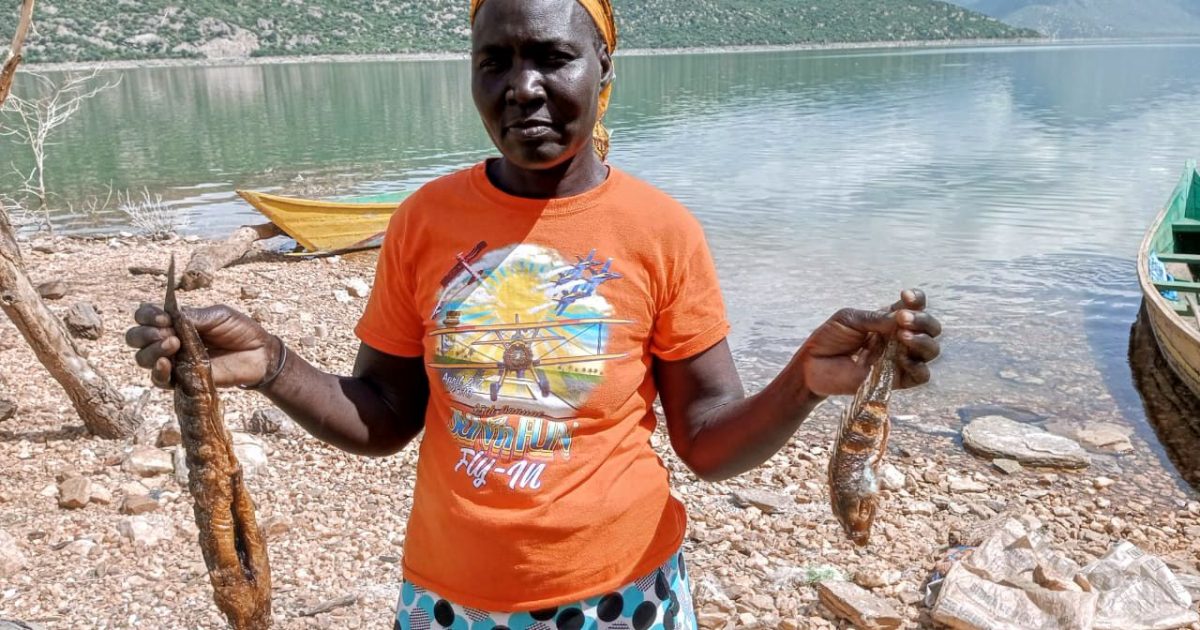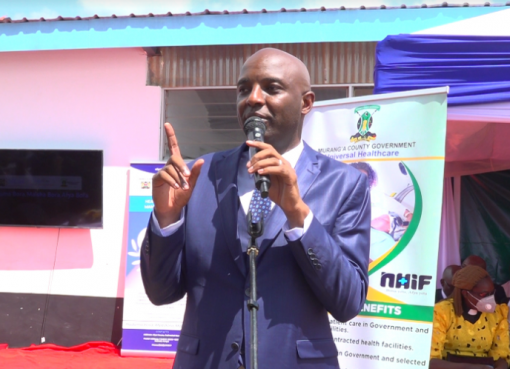Kerio Valley Development Authority (KVDA) has embarked on diversification of the livelihoods of communities living in Turkana and West Pokot counties through promoting fish farming in Turkwel Dam.

Apart from increasing ways of earning revenue for members in the communities the project is also intended to mitigate the effects of the recurring drought.
Speaking to KNA at the KVDA offices in Eldoret, the Managing Director Sammy Naporos said that the project will enable the communities to adapt a new way of livelihood and not over depend on rearing cattle which is affected more by drought.
He added that it will also promote peaceful coexistence and cohesion between the communities living around the Turkwel Dam.
Mr Naporos noted that Turkwel dam is about 66 kilometers square where currently 1000 farmers are able to practice fish farming to diversify their livelihoods.
“The current number of farmers practicing fish farming is 1000 farmers and they have three fish landing areas. We have Riting which is the main one, Murgorio, and Kangoletiang. The target of the authority is to push the number of fish farmers to about 3000 in the next two years,” said Naporos.
He pointed out that the authority did the first fish stocking in 2006 with the major fish breed being Tilapia.
The Managing Director further said that KVDA has formed a Beach Management Unit (BMU) that is able to enlighten the farmers through various trainings on proper fish handling and safety.
“We also promote safety within the dam. There is training on safety and we provide safety gear especially life jackets to fishermen within the dam. We have also trained 4 coxswains, the trained personnel from The Kenya Maritime Authority on rescue and safety in case of any case of accident while fishing in the dam and also Lake Turkana,” explained Naporos.
For the success of the project, Naporos said that the authority had partnered with various institutions like the department of fisheries at University of Eldoret, department of fisheries North Rift, and Lake Basin Development Authority to help in research and training.
He further explained that in December 2021 they introduced half a million fingerlings which led to the dam being closed temporarily for 6 months for breeding purposes and was later reopened last month.
Through the restocking programme by the end of 2023, the authority is targeting to achieve increased production from the current annual average of 100 tonnes to 140 tonnes to 160 tonnes.
In addition, fish maximum weight is expected to increase from 200 grams table size to between 300-350 grams of table size fish.
The project had also helped to increase per Capita income due to increased value from the previous average of Sh 50-70 to 100-150 per table size fish, which in turn had improved food and nutrition security through provision of alternative source of food with high nutrition value.
“The problem with the dam, unlike the lake is that the fish at the dam are never the same size as those in the lakes, because of the food that is available. So we are working with these departments to try and get the right kind of algae species to sustain the fish in terms of quality,” he said.
“The reason why we introduced the new breed is that there has been a lot of inbreeding reducing the size and the quantity of fish. That’s why in December we introduced a different variety of fish to do a new multiplication,” pointed out Naporos.
The Managing Director pointed out that the fish farming project has also been able to move to the commercial side with the towns that benefit being Riting, Ortum, Kapenguria, Kitale and Eldoret.
Naporos hinted that KVDA is also exploring more projects like cage fishing, where fish are provided with supplementary food at one place, adding that the fish caught from the current system are bigger than the fish in the dam and that one cage can yield up to Sh 1 million in terms of sales.
The other project that KVDA has embarked on is working with the Ministry of Tourism to profile Turkwel dam and Lake Turkana as one of the tourist destinations within the northern region.
“Profiling the dam as a tourist destination is something that we are working on and the Ministry of Tourism will have a team that will inspect the place. We will be happy every weekend to have a bus taking campus students to the dam since it is also one of the most unique dams in terms of design and hydraulics. West Pokot also has one of the best sceneries in terms of landscapes,” explained Naporos.
The Managing Director pointed out that the main challenge facing the Turkwel Dam and Lake Turkana are several cases of human-wildlife conflict posed by crocodiles that have been reported.
He said the authority had laid down proper measures to minimise threat to human life by recruiting wardens to move around, monitor and advice the community on how to stay safe.
The communities living around the dam have lauded the project by KVDA saying that it has helped transform their livelihoods economically, while at the same time improving their nutrition.
Regina Lokorinyang, a resident of Tiring in Turkwel who is a beneficiary of the project said it has helped her pay school fees for her children and enabled her to fend for the family’s daily needs.
On his part Vincent Opio, a youth in the area, said the project has provided the youth with source of employment through fishing.
” We are able to practice fishing through which we earn money for our domestic needs and commercial purposes too, we have built houses, buy foods because this place does not support crop farming because of the rocky terrain,” said Opio.
In his remarks the Riting fish landing site Beach Management Unit Chairperson Lopuo Lotelelkwang said that the management had ensured each person uses recommended nets to avoid fishing undersized fish to prevent exhaustion of the fish in the lake.
By Ekuwam Sylvester and Ian Kimuya





